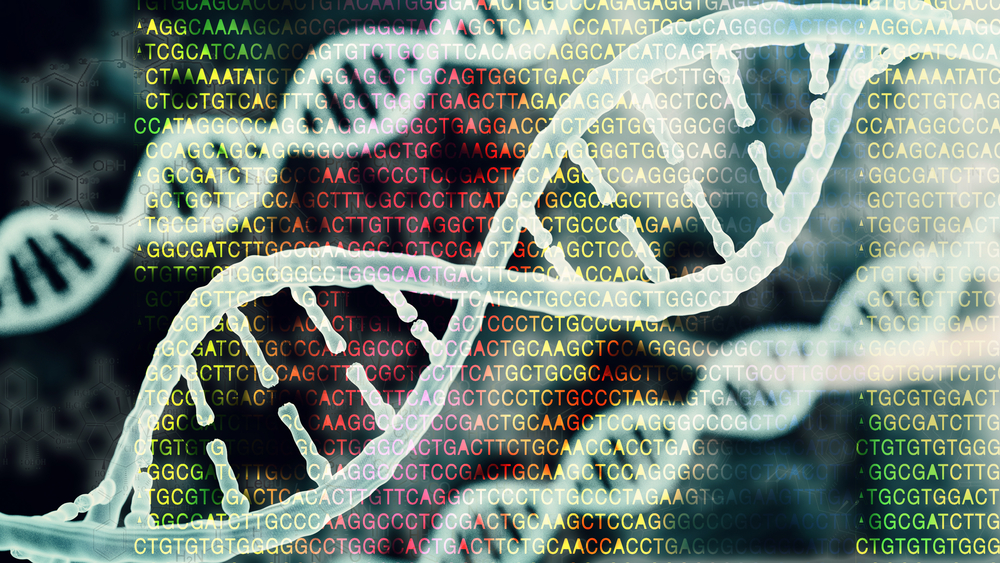New Gene-editing Tool Can Reverse Specific CF-related Mutations
Written by |

CI Photos/Shutterstock
A precise gene-editing tool that reverses single DNA mutations may lead to genetic therapies for people with cystic fibrosis (CF), a study suggests.
The study, “Programmable C:G to G:C genome editing with CRISPR-Cas9-directed base excision repair proteins,” was published in the journal Nature Communications.
CF is caused by a mutation in the CFTR (cystic fibrosis transmembrane conductance regulator) gene. In many cases, this is a change to one of the four building blocks of DNA (nucleotides): guanine (G), cytosine (C), adenine (A), and thymine (T). A change from G to C underlies many genetic diseases, including CF.
As such, developing technology to reverse this change — C back to G — could lead to a treatment for CF in those with this mutation.
CRISPR-Cas9 technology is a gene-editing tool that allows genetic material to be added, removed, or altered at particular locations in the genome. It works by using a guide RNA molecule that matches a specific gene and the Cas9 enzyme that cleaves DNA at those specific positions. However, it lacks efficiency when an exact single change is needed.
Two existing types of DNA editors, called cytidine base editors (CBEs) and adenine base editors (ABEs), have shown ability to convert C to G as off-target changes.
Researchers at the Genome Institute of Singapore (GIS) have built on these findings to create a gene-editing tool called CGBE (CG base editor) that changes C to G.
“The CGBE gene editor is a ground-breaking invention that for the first time, directly converts C to G in genes, which potentially opens up treatment avenues for a substantial fraction of genetic disorders associated with single-nucleotide mutations,” Wei Leong Chew, PhD, the study’s senior author, said in a press release.
The breakthrough came with the addition of two enzymes to the Cas9 system, cytidine deaminase (APOBEC) and XRCC1, a DNA repair enzyme that converts the defective C to a G.
To get there, the team tested different DNA repair enzymes, orientations of the enzymes, and guide RNAs in cell culture targeting the HEK2 and HEK3 genes, both of which have been used to characterize gene editors.
Additional disease-associated genes were tested to further refine the editor, including the hearing loss-associated gene GJB2, the MYBPC3 gene related to hypertrophic cardiomyopathy (abnormally thick heart muscle), and the dyslipidemia-associated gene ADRB2 (altered levels of blood fats).
Based on these experiments, the most efficient gene editor was rAPOBEC-nCas9-rXRCC1 that edited human cells at 15.4% efficiency with 68% purity, within a three-nucleotide target window.
CRISPR-Cas systems are known to generate unwanted off-target changes that may lead to safety problems in patients. As such, the team assessed CGBE on 29 off-target sites using five guide RNA molecules compared to BE3, a version of the cytidine base editor.
“The safety of patients is critical,” added Chew. “We are working to ensure our CGBE and CRISPR-Cas modalities are both effective and safe in disease models before we can further develop such modalities for the clinic.”
Both CGBE and BE3 induced more than 0.1% of C to A, G, or T at the same 15 off-target positions. In only two of these 15 positions did CGBE induce more off-target editing than BE3. At the remaining 13 sites, CGBE demonstrated lower off-target activity.
Finally, experiments showed this particular CGBE was more efficient in some cell types, such as the eHAP cell line used for biomedical and genetic research, but less efficient in others, such as human stem cells.
In addition, alternate versions of the CGBE were more efficient editors in HTB9 cells, a urinary bladder cancer cell line, “indicating that different CGBE architecture can be employed for optimal performance according to cell types,” the team wrote.
“Here, we developed CGBEs that target cytidine within a specified window and convert it into guanine as a predominant editing product,” the researchers added.
Patrick Tan, PhD, executive director of GIS, said: “Novel editors such as CGBE are expanding the growing suite of precise genome-editing tools … Together, they enable the precise and efficient engineering of DNA for research, biological interrogation, and disease correction, thereby ushering a new age of genetic medicine.”






